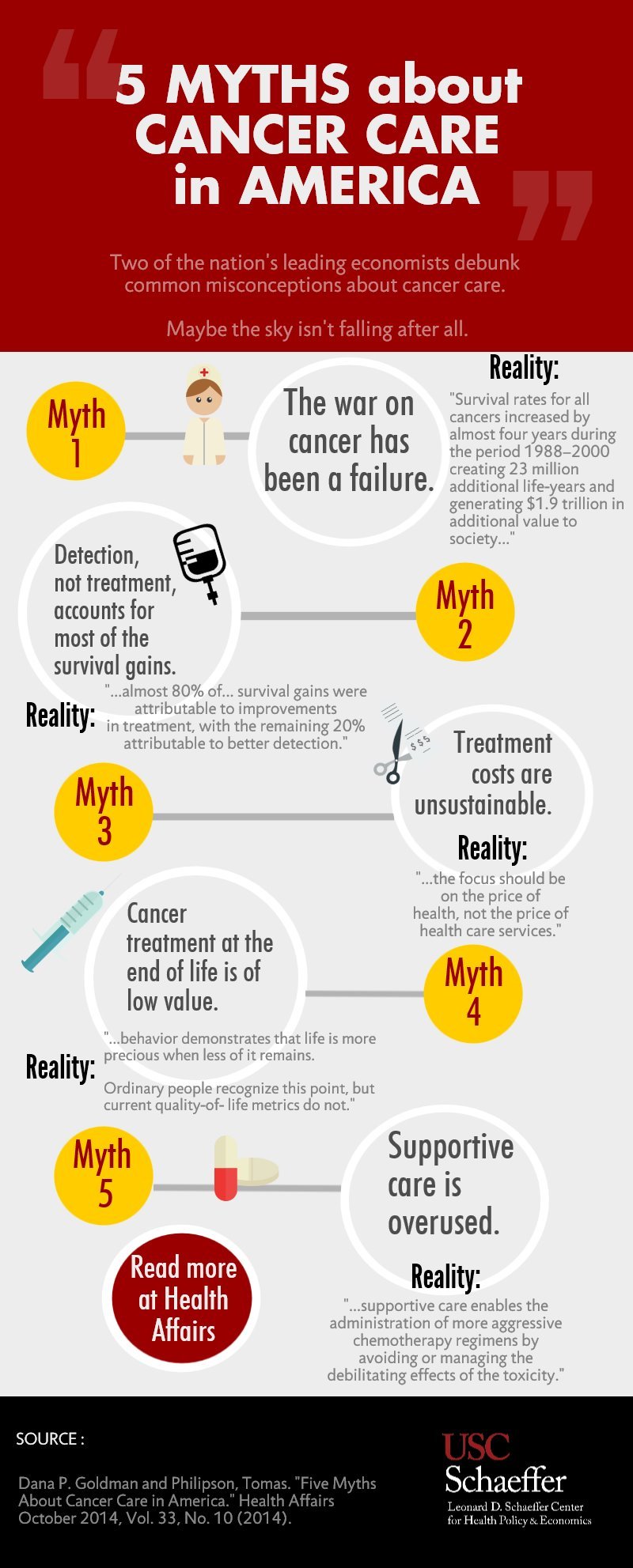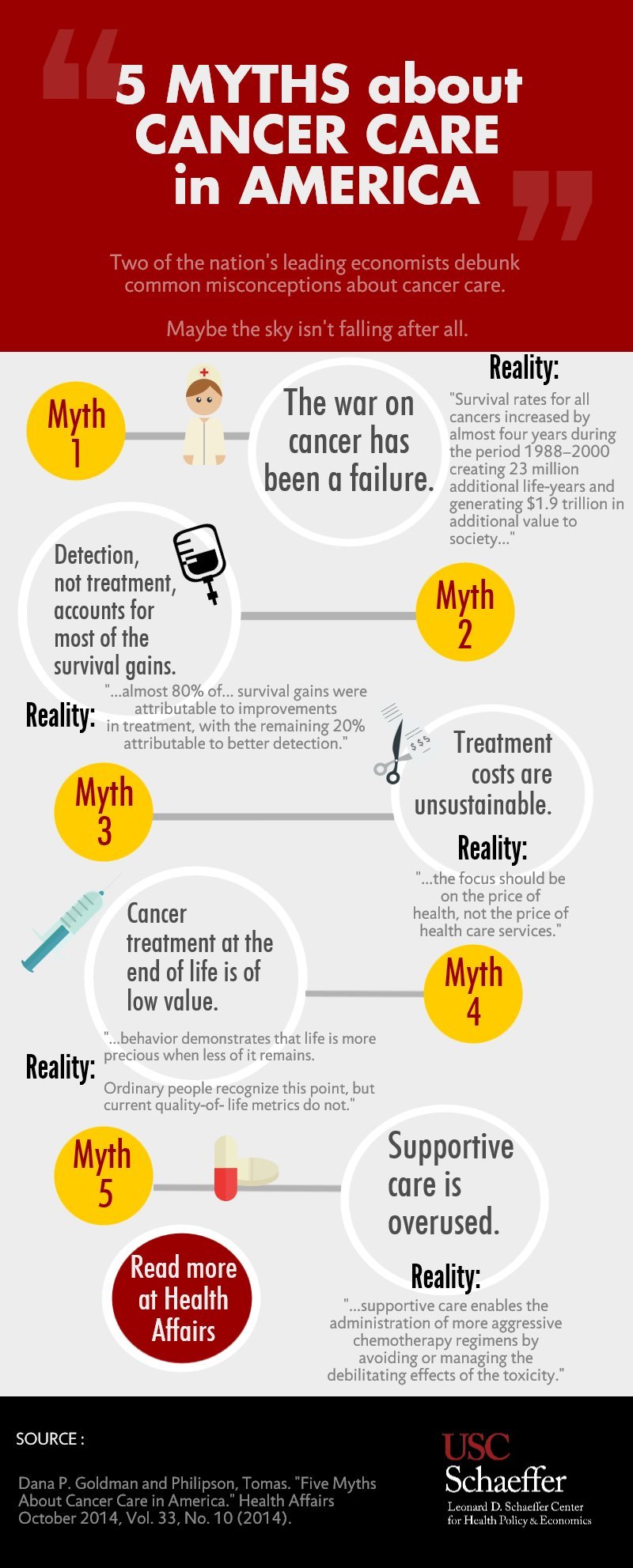Cancer is a devastating diagnosis and it’s hard to find someone who hasn’t been touched by the disease. However, given its complexity, the facts about cancer care are often misconstrued.
A new Health Affairs article by Dana P. Goldman, Director of the Schaeffer Center for Health Policy and Economics at the University of Southern California, and Tomas Philipson, Professor of Public Policy, Economics, and Law at the University of Chicago, presents five common cancer myths and explain the more nuanced reality at hand. Following is a brief overview:
Myth 1: The War On Cancer Has Been A Failure
- Reality: Cancer patients are living longer, healthier lives than ever before, and survival rates continue to improve. Additionally, newer therapies often allow for a better quality of life. While cancer remains pervasive, there is hope that it can be managed as a chronic illness, with modest side effects.
Myth 2: Detection, Not Treatment, Accounts For Most Of The Survival Gains
- Reality: Cancer treatment has driven the majority of survival gains over the last few decades– almost 80 percent from 1988-2000. Furthermore, effective treatment is what makes better detection valuable.

Myth 3: Treatment Costs Are Unsustainable
- Reality: As the authors point out, “the focus should be on the price of health, not the price of health care services.” And, the value of an innovative medicine should be viewed over the course of its lifecycle. Many health care services have higher costs than oncology drugs, but the focus on cancer treatments is because it is the patient, not the insurer, who has to pay. When it comes to cancer, insurers are requiring patients to pay a larger share of their medicine costs out of pocket.
Myth 4: Cancer Treatment At The End Of Life Is Of Low Value
- Reality: According to Goldman and Philipson, “coverage decisions based solely on median survival will neglect the great social value for a minority who live long after the trial ends.” The current QALY-based approach assumes the value of a life-year is constant and therefore “is inconsistent with patients’ and society’s value of cancer care.”
Myth 5: Supportive Care Is Overused
- Reality: Supportive care regimens are an integral part of innovation and patient care – addressing side effects and enabling the administration of more aggressive chemotherapy regimens. Their use is underreported, but some of the best clinical trials include supportive care as part of the protocols.
Read more about the value of specialty medicines in the Washington Post’s Wonkblog.
View PhRMA’s new report on Medicines in Development for Cancer here. For more information on the cost and value of oncology medicines, please visit www.phrma.org/cancer.




